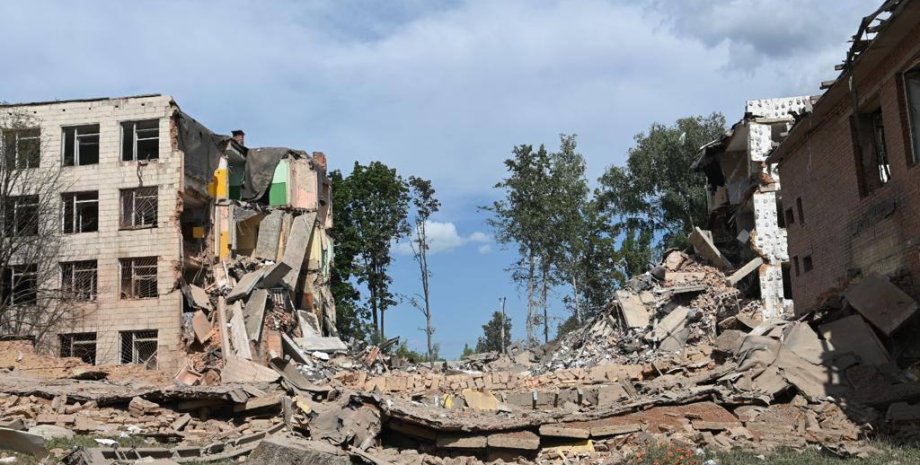
The drones of the Armed Forces of Ukraine attacked the Krasnosavoda Chemical Plant in the Moscow region, destroying the shop where they made thermobaric charges for Shakhad's drones. Satellite images recorded significant damage in the plant. OSINT Analytics "Cyberboically" published a satellite photo of the shop-a narrow hangar 250 meters long with a gray roof. The picture shows a damaged area of about 50 meters, where, apparently, part of the production premises disappeared.
The Cyberboroshnaya post states that it was a shop where explosive means were made and collected. The plant is located on the northern outskirts of Krasnosavodsk near Moscow. The attack itself occurred on the night of July 7, 2025. On the evening of July 7, the General Staff of the Armed Forces confirmed the attack of defense forces on the Krasnosavoda chemical plant.
According to military expert Roman Svitan, this plant is a key object where combat units for drones-Kamikadze are manufactured, including the so-called "Shahda" or "geranium", equipped with thermobaric charges. Such ammunition, according to the expert, creates serious problems, especially when used against civilian objects. Svitan noted that thermobaric charges used in drones have a specific effect: they are effective indoors, which makes them actually terrorist weapons.
"When the drone is equipped with a thermobaric charge, its use is directed almost exclusively to civilian objects. On the front line, such charges were used earlier, but now they are mostly directed to the rear, which is a pure act of terror," he explained the focus. According to the expert, the task of destroying the production of such charges was set to reduce the terrorist threat. Ukrainian intelligence conducted a target, after which an attempt was made to disable the plant.
Military expert Oleg Zhdanov notes that in addition to combat for "Shahaneda" at this enterprise, ammunition was made, including thermobaric charges for Tos-1A missile installations. It is also known that the plant produces: the plant produces millions of pyrotechnic products annually. It also cooperates with other enterprises of the Russian military-industrial complex, in particular with NGO "Iskra", which produces solid fuel rocket engines for strategic missile systems.
However, Svitan emphasized that it is difficult to destroy such an object, especially with underground shops and conveyors. "Such plants often have several underground floors, which makes them invulnerable to drones. For effective damage, rockets of different range are required, depending on the location of the object," the expert emphasized.
He also added that although a blow to the plant could create some difficulties for production, it is impossible to completely stop the cycle of ammunition with drones. "You can talk about temporary problems, but not a complete stop. This requires ballistic or winged missiles with powerful combat units, such as tandem, which can punch underground fortifications," Svitan said.
Regarding the impact of a shock on the reduction of Shahheda attacks, the expert expressed the opinion that the destruction of part of production in Russia may limit the use of thermobaric charges, but will not affect the supply of such ammunition from Iran. Svitan emphasized that thermobaric charges are not used in large quantities, since the bulk of the drone bombs come from Iran.
Thus, a blow to the Krasnosavodsk plant was aimed at reducing Russia's ability to make these charges on its own, which could partially reduce the terrorist threat to Ukraine. At the end, the expert stressed that the effective destruction of such objects requires the coordination of intelligence, accurate targeting and use of powerful missile systems. Oleg Zhdanov believes that the impact will be, but insignificant.
Since not every enterprise works with such specific explosives, the destruction of this plant can temporarily reduce the availability of thermobaric charges. However, the expert stressed that the effect of the impact will be manifested only after the warehouse reserves of such ammunition. "Our intelligence, unfortunately, does not provide accurate data on the volume of stocks of thermobaric ammunition in Russia.
Therefore, it is difficult to predict when it will affect the intensity of attacks," says Focus Zhdanov. He also added that in Russia there are at least three Shakhaneda production companies, including their final assembly together with combat units. Thus, although a blow to the Krasnosavodsk plant can partially limit the use of thermobaric charges, the total number of attacks with drones is unlikely to be significantly reduced.
"If the impact is, it will not be critical, because Russia has other capacities for the production of drones and their combat units," Zhdanov summed up. The co -founder and executive director of the Ukrainian Center for Security and Cooperation Dmitry Zhmaylo believes that such a blow will not immediately reduce the pace of production of Russian weapons, including Shakhad UAVs.
Therefore, the mentioned blow to the Krasnosavodsk plant should be considered in combination with other such strokes, as only as one of the components of the reduction of weapons production, and to analyze the general picture accordingly. "Currently, it is strategically important to reduce the enemy's production capacities, including blows to enterprises that are engaged in the final collection of drones, as well as factories that produce critical components for these drones.
In fact, the Ukrainian command is trying to break the production chain and slow down the production. In particular, the expert remembered how the forces of Ukraine's defense have inflicted a series of drone blows for goals in the depths of the Russian Federation. The Izhevsky Plant "Dome" was amazed, where the production of UAV "Harpia-1A" and "Vonyrr-Progress"-the production of satellite navigation "Comet" used in "Shahaneda".
We will remind, the head of the project of technological strengthening of the security and defense forces of Ukraine Victory Drones Maria Berlinskaya states that in 2026 Ukrainian cities may be under the sight of "drone-killers"-autonomous UAVs with elements of artificial intelligence, which will hunt for people around the clock. Focus also reported that the production of percussion drones in Russia has increased 5. 5 times compared to 2024.










All rights reserved IN-Ukraine.info - 2022